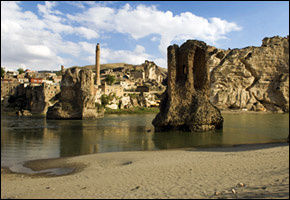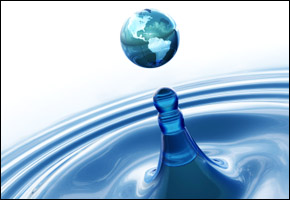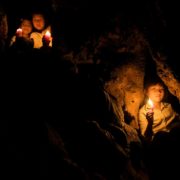United Nations Urges Ethiopia to Suspend Gibe III Dam Construction
In June, a committee concluded that the construction of the dam endangered the existence of Lake Turkana, the largest desert lake in the world and a UNESCO World Heritage Site.
The United Nations has called for Ethiopia to suspend construction of the giant Gibe III Dam, pending a detailed environmental assessment of the project’s impact on Lake Turkana and the surrounding area, the Daily Nation reported.
The decision came in June during the 35th annual session of the United Nations Educational, Scientific, and Cultural Organization (UNESCO) World Heritage Committee, which establishes sites to be listed as being of special cultural or physical significance. The committee concluded that the construction of the dam endangered the existence of Lake Turkana, the largest desert lake in the world and a UNESCO World Heritage Site.
“The World Heritage Committee expresses its utmost concern about the proposed construction of the GIBE III dam on the Omo River in Ethiopia and its likely impacts on Lake Turkana, which is located downstream, in neighbouring Kenya, and draws almost 90 percent of its inflow from the above river,” the organization said in an official statement.
UNESCO also cited a recent study, commissioned by the African Development Bank, that found the dam would likely cause a significant drop in the lake’s water level, increase the lake’s salinity, and threaten the lake’s unique ecosystem.
The U.N. body asked the governments of Ethiopia and Kenya to invite a monitoring mission to review the dam’s impact on the lake. UNESCO also urged the project’s lenders “to put on hold their financial support” until the committee’s next annual meeting in June 2012.
The Gibe III dam is being built by an Italian company. ICBC, a Chinese state-owned bank, has approved funding for the project, while China’s export credit agency is financing the transmission lines from the dam.
The 1840-megawatt hydropower facility — approximately 250 kilometers (155 miles) southwest of the Ethiopian capital, Addis Ababa — is part of the Gibe-Omo Cascade project that also includes the existing Gilgel Gibe I Dam and the 420-megawatt Gibe II, which is nearly completed.
The Gibe III is the highlight of Ethiopia’s five-year plan to raise its power generation to as much as 10,000 megawatts and expand electricity coverage to 75 percent of the population, up from the current 41 percent. The World Bank estimates the country’s hydropower potential at 45,000 megawatts, the second-largest capacity in Africa, after the Democratic Republic of Congo.
Ethiopia has already signed agreements to export hydroelectricity to Kenya and has almost completed construction of the transmission line between the two countries.
But the Gibe III project has attracted strong criticism from a number of Western environmental groups over what they say are the dam’s negative impacts on the food security and local economies for half a million Ethiopians and Kenyans. International Rivers, a U.S.-based campaign group, has called the Gibe III a potentially “risky, economic gamble for one of the world’s poorest countries” and has questioned the project’s integrity.
The construction of the dam has also sparked tension between the Ethiopian government and activists in North America and Europe. During a recent international hydropower summit in Addis Ababa, for example, Ethiopian Prime Minister Meles Zenawi defended the government’s decision to expand the dam projects and called the views of Western critics “ironic” as Ethiopian facilities are “infinitely more environmentally and socially responsible than the projects in their countries, past and present.”
For more on the cultural significance of the Lake Turkana area and how climate change is lowering lake levels and affecting nomadic borders, read Water Conflict: Violence Erupts Along Ethiopia-Kenya Water-stressed Border.
Source: Daily Nation, International Rivers, UNESCO
, a Bulgaria native, is a Chicago-based reporter for Circle of Blue. She co-writes The Stream, a daily digest of international water news trends.
Interests: Europe, China, Environmental Policy, International Security.








Leave a Reply
Want to join the discussion?Feel free to contribute!